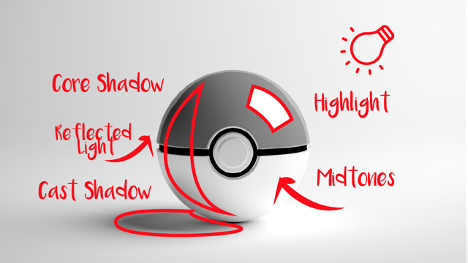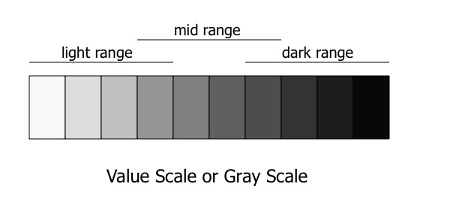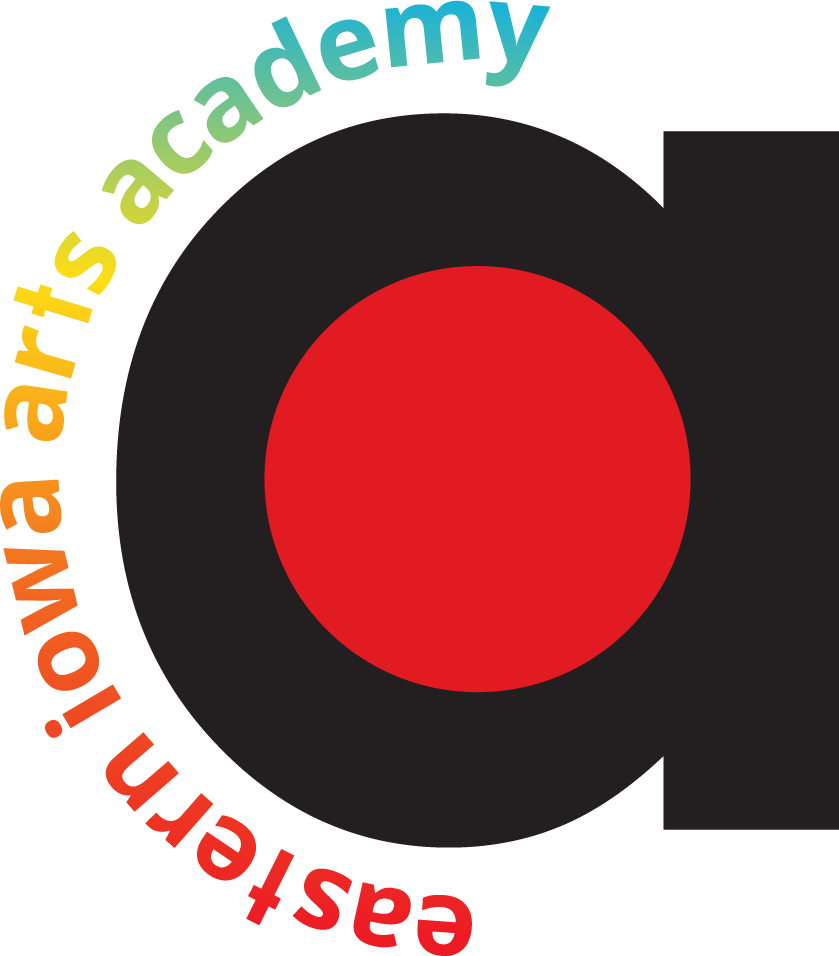Local Artist Lauren Manninen
Lauren is an artist who has worked with many students through the Eastern Iowa Arts Academy's After School Enrichment Program, both in the schools and at EIAA's Music and Arts Studios. She received her bachelor’s degree in painting from the Minneapolis College of Art and Design and studied abroad at the Osaka University of Art. Find Lauren on Facebook.
Anatomy of a Shadow
In this video we will learn about the basic parts of a shadow. Did you know there are more than just one? Let’s start by breaking it down.
Materials:
- Pencil
- Paint brushes
- Water container
- Cardstock or toned paper
- Black and white paint - acrylic, oil or tempera
Anatomy of a Shadow:
Using both images on this page, let's consider the elements of a shadow; first you have the lightsource, in the image below it is coming from the top right. This light source creates a highlight on the surface it hits first. The highlight will be the lightest color in the value scale. The areas around the highlight are the midtones. They tend to be a middle value on the value scale. The area facing away from the lightsource makes up the core shadow. The core shadow will consist of the darkest tones on the scale. The cast shadow is created by the object as it blocks the light from the surface of the table. Shadow puppets are an example of cast shadows. Finally, the reflected light is created from light bouncing off the surface of the table back onto the object. This appears as a thin light sliver near the edge of the core shadow.

Directions:
First start by sketching a sphere on your paper - this will be your pokeball, basketball, watermelon, whatever you’d like! Anything spherical in shape is perfect. Next draw a crescent shape for the core shadow and highlight areas. Then draw a squished oval for the cast shadow.
Before we can paint our object we are going to create a value scale on a different piece of toned paper. On one side lay down white paint. Next to that mix a very light gray; continue adding just a bit more black until you get to the other side and have 100% black. This value scale will help us decide how dark to make the different parts of our shadow. As you are doing this be mindful that black paint will overpower white paint very easily, so you only need a tiny bit of black to create gray tones.

Now onto painting! Begin painting in your sketch starting with the highlight. Fill in your highlight shape completely with white paint. Then fill in the midtone area with tones from the middle of your value scale. After that fill in your core shadow and cast shadow sections with values from the dark range of your value scale. Finally the reflected light will be on the lighter end of your value scale, but not pure white. This is just a sliver on the left hand side of the sphere.
After you have all the areas filled in you can add a background, or leave as is. From here you can go back and add details that show what your sphere is! Is it an an orange? A tennis ball? An adorably round kitten? Let’s see what you can come up with.
Share your work and stay connected!
We are curious to see your project! Say hi or upload photos in the comment section below. If you have trouble, or want to share a short video, email us at info@eiaaprogram.org.
We want to stay connected to our creative students when we get back to the new normal. While you are here, learn more about the Eastern Iowa Arts Academy. While we don't have much taking place in real space/time during the pandemic, we will get back to our regular live and in-person classes. When we do, we'd love to have you as a member!
